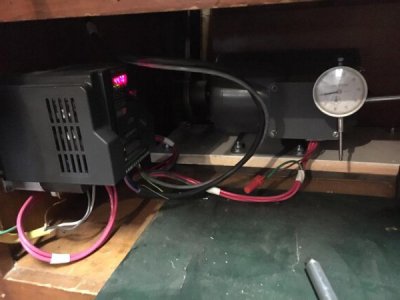I just acquired a second Logan lathe. This one is a 1947 model 1820 "10inch" swing. From my nubie perspective the lathe is in moderate shape and this one has the quick change gear box and a oil bath apron with a power feed clutch that my MW / Logan 2136 lathe does not have. Here's my question. The motor it came with is not original and is only 1/3 hp. In addition it has a on/off/reverse switch right in the motor housing itself, very inconvenient and a little unsafe. I have a reasonable 1 hp motor that is looking for a home. My question is, is there a negative side to having a larger than recommended motor? Second question, if I get a new 1/2 hp motor to replace the existing motor, do you have a favorite make,etc? Thanks for your thoughts, John in Minnesota
Sent from my iPhone using Tapatalk
Sent from my iPhone using Tapatalk


